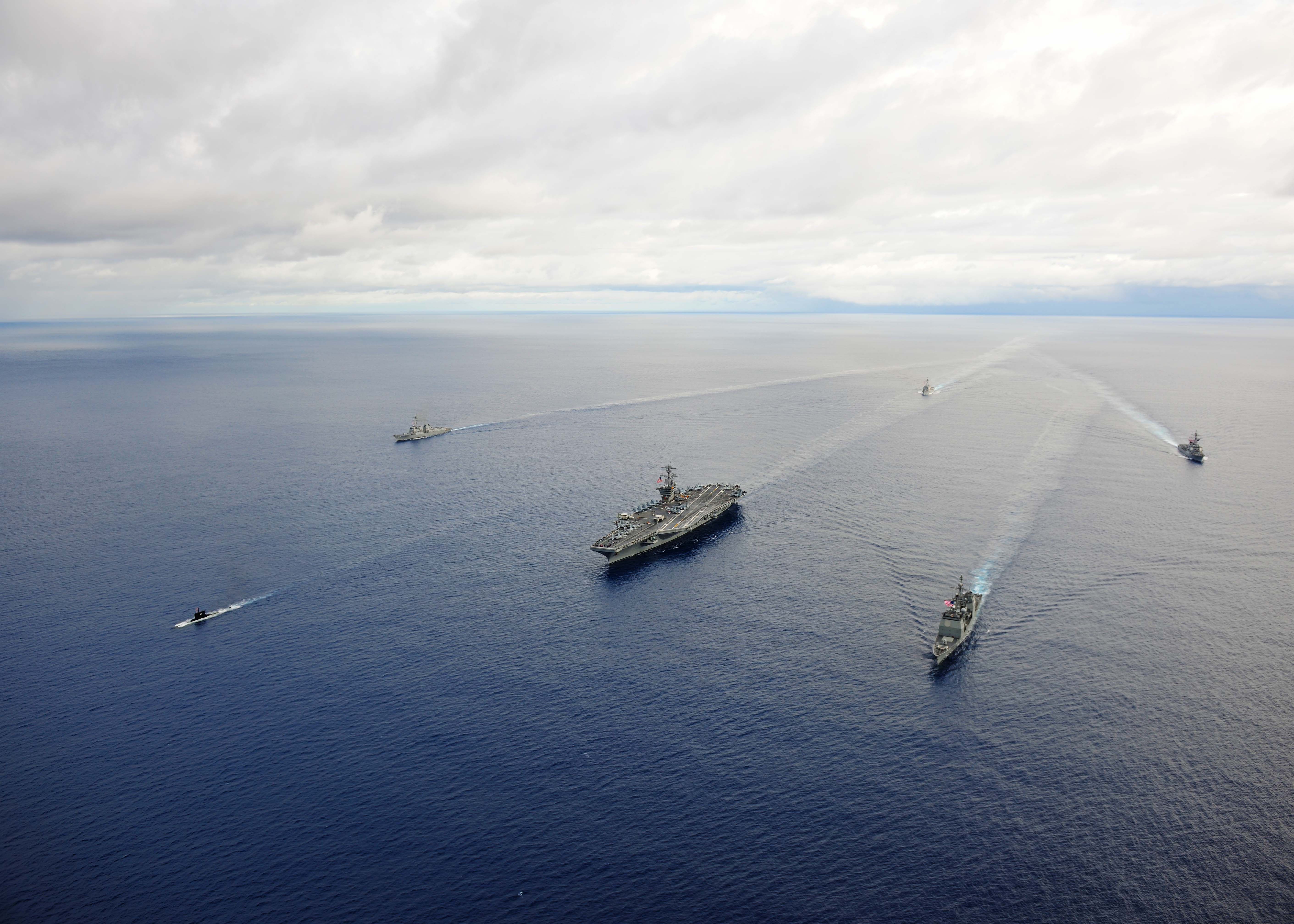
The Pentagon has dropped the controversial name Air Sea Battle for its concept to defeat modern anti-access weapons and folded the accompanying Air Sea Battle Office (ASBO) into the Department of Defense’s Joint Staff, according to a Jan. 8, 2015 memo obtained by USNI News.
The new Joint Concept for Access and Maneuver in the Global Commons (JAM-GC pronounced: Jam, Gee-Cee) will take the work done by the ASBO and fold them into a new revision of the original ASB concept due out by the end of the year, a Department of Defense official with knowledge of the change told USNI News on Tuesday.
The Joint Staff J-7 directorate will “monitor and support” the JAM-GC , according to the memo signed by Pentagon Joint Staff director Air Force Lt. Gen. David Goldfein.
The name change, “presents a better opportunity to rename the concept to better represent the full scope,” a DoD spokesman told USNI News on Tuesday.
Part of the change will include a focus on including U.S. land forces into the wider concept.
“The missing part of the Air Sea Battle concept was the land portion, basically how the land forces could be used to allow U.S. forces to gain access to a contested area,” the spokesman said.
The often controversial and misunderstood Air Sea Battle concept was setup to create counters to emerging capabilities that deny U.S. forces access to a potential battle space, according to defense officials.
The ASB effort was advertised by the Pentagon as a counter to the anti-access area denial (A2/AD) threats that emerged while the U.S. military was focused on the land conflicts in Iraq and Afghanistan.
The goal is for the U.S. military to, “go into an area, [and when] someone throws up jammers, somebody throws out mines, somebody throws out submarines as a threat to your surface ships . . . you know right away what to do about it,” then-Rear Adm. James Foggo, the Navy’s head of operations, plans and strategy told USNI News in 2013.
Originally devised in 2009, the concept corralled about 20 senior officers to develop low-cost ways to defeat emerging A2/AD threats.
Those threats included everything from guided missiles to more slient submarines to sea mines to cyber capabilities — all tailored to deny the U.S. access to contested areas.
“The beauty of the concept is it focuses the services on what the problems are. That’s become a very useful lens,” a defense official familiar with the ASBO told USNI News in late 2013.
“It’s the disrupt, destroy and defeat approach that Air Sea battle embraces that talks about a different way of waging war. It applies an operational design on how you would do that against an adversary that [has] multiple types of these capabilities.”
Early iterations of the ASBO acted as a so-called help desk for U.S. combatant commanders on how to combine existing assets to produce the required result.
The creation of the office was — in part — an admission that certain U.S. military skills had atrophied while the brunt of U.S. technical and tactical innovation was focused on Iraq and Afghanistan.
“We’ve lost some skills and let them wither, because it wasn’t required in operations in the past,” one defense official told USNI News in 2013.
Though the basics of the concept were largely thought necessary by Pentagon leaders, ASB became politicized internationally.
Some pundits called ASB concept a provocative move against the growing capability of the Chinese People’s Liberation Army and accused the Pentagon of antagonizing China with the move — a charge the DoD denied.
Internally, the name itself — and the Air Force and Navy’s early involvement with the concept — caused the Army to complain they were left out of the A2/AD conversation and were quickly folded into the ASBO.





